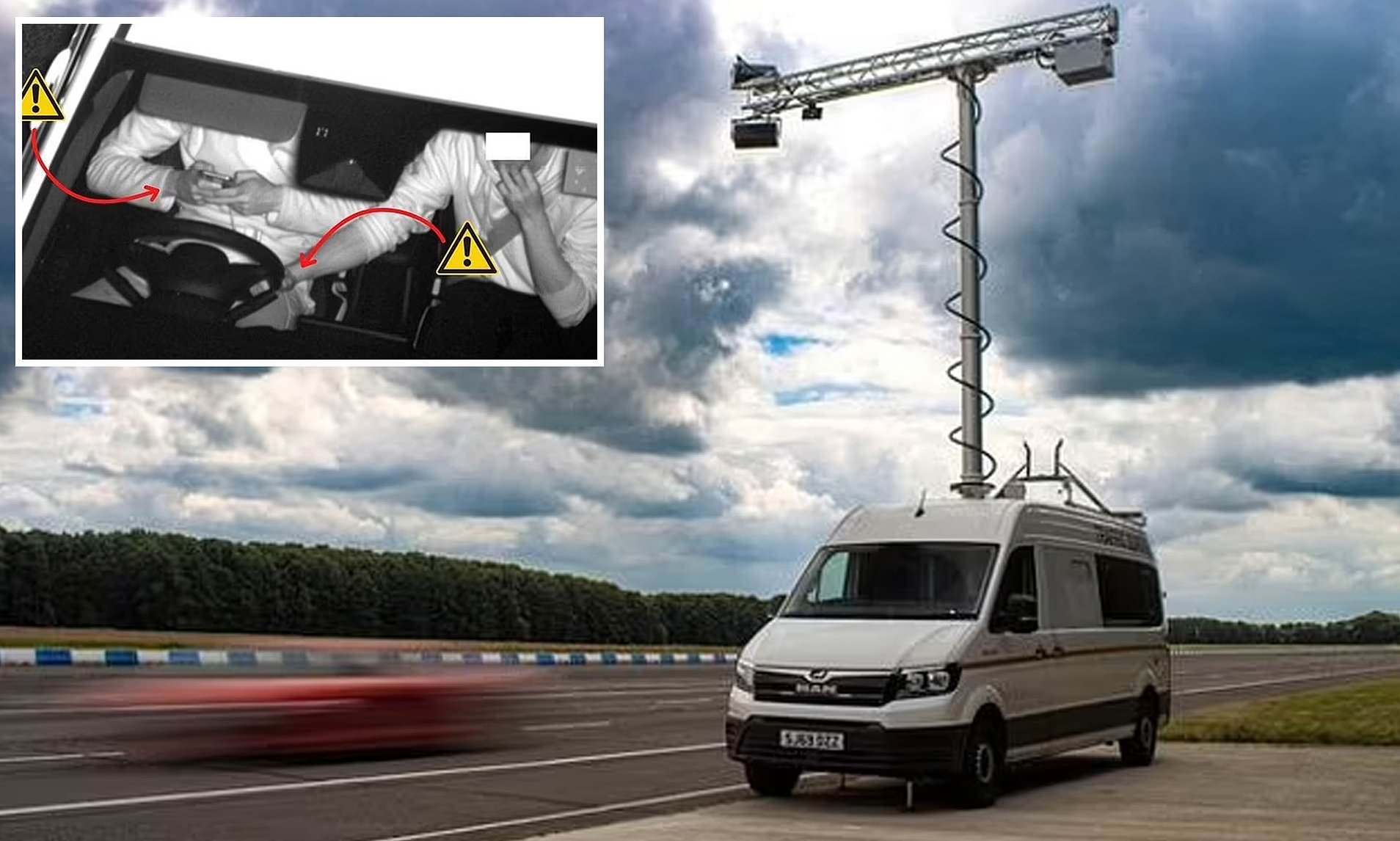
FURY AS AI SPEED CAMERAS THAT 'SPY INSIDE' CARS SET TO BE ROLLED OUT
AI speed cameras that can 'spy inside' cars are set to be rolled out across the UK to catch drivers using mobile phones or failing to wear seatbelts.
The new technology will allow police to both crack down on motorists who are 'distracted' by mobile phones and catch speeding drivers using the same cameras.
Transport chiefs are rolling out the cameras as Department for Transport research suggests up to 400,000 British drivers are still using handheld devices illegally while behind the wheel.
However privacy campaigners have reacted with fury to proposed widespread use of AI cameras - blasting the 'intrusive and creepy' tech that treats everybody as a suspect.
About a quarter of all police forces across the UK are already deploying cameras that can catch drivers using a mobile phone - punishable by up to six penalty points and a £1,000 fine.
And 11 police forces have also deployed roadside AI cameras, made by Australian tech firm Acusensus, that capture high-quality images of vehicles as they pass.
The high-tech cameras take two images of a driver - one at a shallow angle to see if they have a phone at their ear and one at a steep angle to see if a device is on their lap.
New artificial intelligence [AI] software then analyses the images and flags if a driver is using a mobile or not wearing a seatbelt - with 'violation packages' then sent to police who can prosecute the driver.
Police forces taking part in a trial of the cameras with National Highways include Durham Police, Greater Manchester, Thames Valley, Sussex and Warwickshire.
To counter privacy concerns, police say the pictures are anonymised to removed identifying features such as number plate, passengers or make of the vehicle. The images are only matched to registration details if a driver is prosecuted.
However privacy groups said this wasn't good enough. Jake Hurfurt, head of research and investigations at privacy campaign group Big Brother Watch, told the Daily Telegraph: 'Unproven AI-powered video analytics should not be used to monitor and potentially criminalise drivers.
'This kind of intrusive and creepy surveillance which treats every passer-by as a potential suspect is excessive and normalising it poses a threat to everyone's privacy.
'People should be free to go about their lives without being analysed by faceless AI systems.'
During a 2022 trial, police cracked down on drivers using mobile phones and driving without wearing a seatbelt with a new van that has an AI camera mounted about 21ft above the road.
The unit uses AI to identify motorists potentially breaking the law. Images are then sent to an officer for a secondary check and those breaking the law are prosecuted.
The enforcement vehicle developed by Aecom and Acusensus has been deployed in Warwickshire, Merseyside, Humberside and East and West Sussex.
While last year new AI cameras caught almost 300 people committing driving offences in just three days, after being deployed on one of Devon's busiest roads.
The camera snapped 117 people using their mobile phones while driving and 130 in cars without seatbelts after being installed on the A30 near Launceston in Devon.
The Acusensus cameras were permanently rolled out on roads in Queensland, Australia, in July 2021.
Other types of hi-tech camera that can catch drivers using a mobile phone are being tested by different police forces.
Vector-SR cameras, made by Jenoptik, can track two-way traffic instead of just one lane and use radar which means they don't require road markings or sensors in the road.
They also do not flash at speeding drivers, meaning somebody will not necessarily know if they have been caught speeding until they receive a fine in the phone.
A third kind of camera, from Redspeed International, uses 4D radar technology to detect speeding vehicles, drivers using mobile phones or not wearing seatbelts and can even check DVLA records to verify if a vehicle is insured and taxed.
Jack Cousens, head of roads policy at the AA, said traditional road policing remains important as cameras cannot detect other motoring infringements, such as drink driving.
He added: 'Cameras that can do everything and anything are a good thing from a road safety perspective because it means there is less chance of getting away with dangerous driving.'
Matt Staton, National Highways' head of national road-user safety, told the Telegraph: 'We know that distracted driving and not wearing seatbelts were key factors in a high number of incidents that resulted in people being killed or seriously injured.
'Working with our police partners we want to reduce such dangerous driving and reduce the risks posed to both the drivers and other people. We believe that using technology like this will make people seriously consider their driving behaviour.'
Read more 2024-07-05T10:30:08Z dg43tfdfdgfd